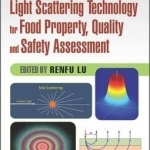Light Scattering Technology for Food Property, Quality and Safety Assessment
BookThis item doesn’t have any media yet
2016 | Science & Mathematics
Light Scattering Technology for Food Property, Quality and Safety Assessment discusses the development and application of various light scattering techniques for measuring the structural and rheological properties of food, evaluating composition and quality attributes, and detecting pathogens in food. The first four chapters cover basic concepts, principles, theories, and modeling of light transfer in food and biological materials. Chapters 5 and 6 describe parameter estimation methods and basic techniques for determining optical absorption and scattering properties of food products. Chapter 7 discusses the spatially-resolved measurement technique for determining the optical properties of food and biological materials, whereas Chapter 8 focuses on the time-resolved spectroscopic technique for measuring optical properties and quality or maturity of horticultural products. Chapter 9 examines practical light scattering techniques for nondestructive quality assessment of fruits and vegetables.
Chapter 10 presents the theory of light transfer in meat muscle and the measurement of optical properties for determining the postmortem condition and textural properties of muscle foods and meat analogs. Chapter 11 covers the applications of spatially-resolved light scattering techniques for assessing quality and safety of animal products. Chapter 12 looks into light scattering for milk and dairy processing. Chapter 13 examines the applications of dynamic light scattering for measuring the microstructure and rheological properties of food. Chapter 14 shows the applications of a biospeckle technique for assessing the quality and condition of fruits and vegetables. Chapter 15 provides a detailed description of Raman scattering spectroscopic and imaging techniques in food quality and safety assessment. Chapter 16, the final chapter, focuses on applications of light scattering techniques for the detection of food-borne pathogens.
Related Items:
| Published by | Apple Academic Press Inc. |
| Edition | Unknown |
| ISBN | 9781482263343 |
| Language | N/A |
Images And Data Courtesy Of: Apple Academic Press Inc..
This content (including text, images, videos and other media) is published and used in accordance
with Fair Use.
